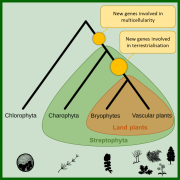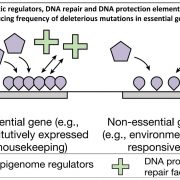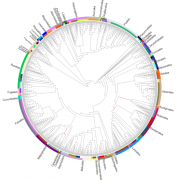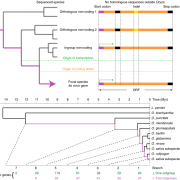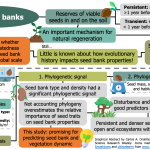Among-population variation in seed mass for 190 Tibetan plant species: Phylogenetic pattern and ecological correlates (Glob. Ecol. Conserv.)
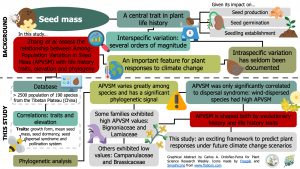 Seed mass is a central trait in plant life history that impacts on seed production, germination, and establishment. Several studies have documented the variation in seed mass between species, but little is known about its variation among populations of the same species. In this paper, Zhang et al. tested the relationship between Among-Population Variation in Seed Mass (APVSM) with plant life-history traits, elevation, and species phylogeny. A dataset of 2503 populations from 190 species of the Tibetan Plateau (China) was built and the APVSM was estimated using the coefficient of variation of each species’ seed mass. APVSM varied significantly among species and had a significant phylogenetic signal, meaning that APVSM is conserved among related taxa. For example, families like Bignoniaceae and Lamiaceae species exhibited high APVSM, while Brassicaceae and Campanulaceae presented low ones. Interestingly, APVSM was only correlated to seed dispersal syndrome, with wind-dispersal species exhibiting higher values than other dispersal modes. Consequently, and given the impact of seed mass variability on plant establishment under changing environments, this study provides an exciting framework to predict plant responses under future climate change scenarios. (Summary by Carlos A. Ordóñez-Parra @caordonezparra) Glob. Ecol. Conserv. 10.1016/j.gecco.2020.e01163
Seed mass is a central trait in plant life history that impacts on seed production, germination, and establishment. Several studies have documented the variation in seed mass between species, but little is known about its variation among populations of the same species. In this paper, Zhang et al. tested the relationship between Among-Population Variation in Seed Mass (APVSM) with plant life-history traits, elevation, and species phylogeny. A dataset of 2503 populations from 190 species of the Tibetan Plateau (China) was built and the APVSM was estimated using the coefficient of variation of each species’ seed mass. APVSM varied significantly among species and had a significant phylogenetic signal, meaning that APVSM is conserved among related taxa. For example, families like Bignoniaceae and Lamiaceae species exhibited high APVSM, while Brassicaceae and Campanulaceae presented low ones. Interestingly, APVSM was only correlated to seed dispersal syndrome, with wind-dispersal species exhibiting higher values than other dispersal modes. Consequently, and given the impact of seed mass variability on plant establishment under changing environments, this study provides an exciting framework to predict plant responses under future climate change scenarios. (Summary by Carlos A. Ordóñez-Parra @caordonezparra) Glob. Ecol. Conserv. 10.1016/j.gecco.2020.e01163


